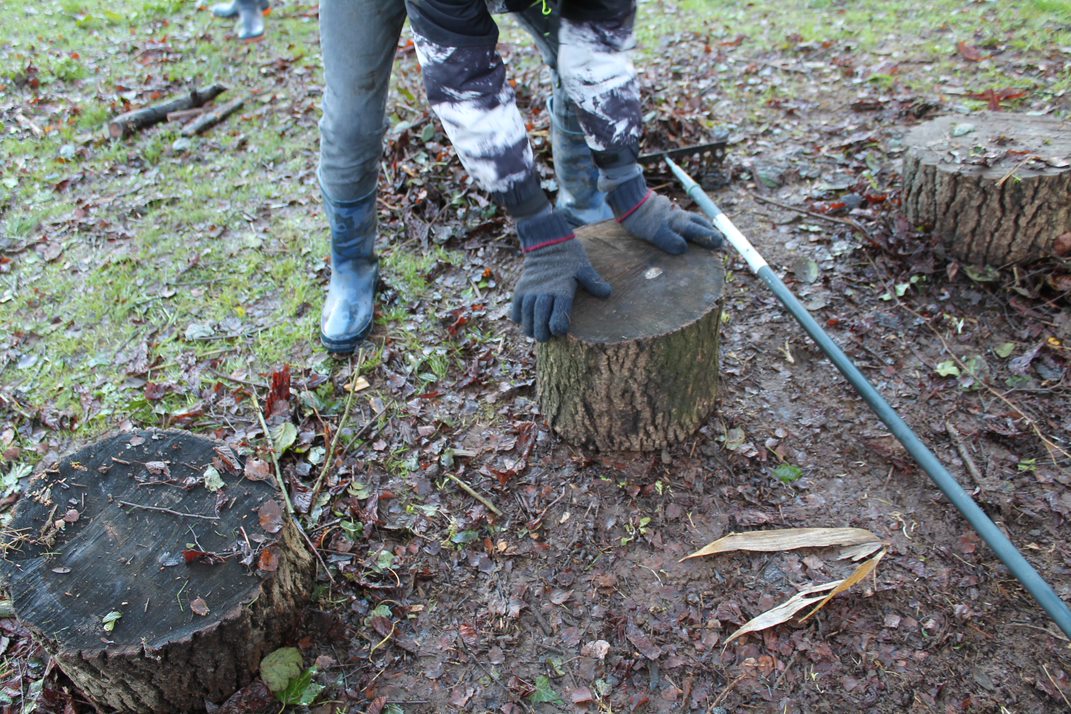
January 21, 2022, by Rupert Knight
Why don’t you build me up, buttercup? A Forest School recovery plan.
As schools continue to evaluate the impact of Covid-19 on their learners, former Deputy Headteacher, Rachel Peckover, explains how her three-form entry, suburban junior school in the East Midlands, set up Forest School provision. The school aimed to tackle issues around pupils’ social development as a result of lockdown, as well as the rise in anxiety and mental health challenges amongst the school population. The post relates to a previous blog in this series on outdoor learning.
Rationale for our Forest School provision
We first began to explore outdoor provision in 2019 when a change in leadership prompted us to reconsider our vision and values, what we really wanted from our curriculum and for our pupils, and whether our school was as inclusive as it could possibly be. We have a significant number of pupils with diagnoses of ADHD and ASD and we wondered how best our educational spaces supported neurodiversity within our school.
As McDowell (1999 cited in Cudworth, 2015, p.76) states:
Places are made through power relations, which construct the rules, which define boundaries. These boundaries are both social and spatial – they define who belongs to a place and who may be excluded.
We were concerned that traditional classrooms, being part of an education system with a focus on exam performance, a jam-packed curriculum, league tables and accountability, were excluding some of our pupils, turning them off education all together. We very much subscribed to the idea that:
Spaces … are seen to obtain their belonging, or “placeness”, not just from the location but also from the experiences and interactions of those dwelling in them (Cudworth, 2015, p. 75),
and that we, as suggested by the article, could operate differently.
Along with changes to our physical building, with different spaces allowing for a range of different needs, we made links with advocates for outdoor education through independent Forest School providers and our local university, exploring ways to move forward with this.
Our Headteacher signed up for Forest School training, on the understanding that we would never call what we were doing Forest School – it was too prescriptive! However, fast forward to the school lockdown in March 2020 and we began to change our minds.
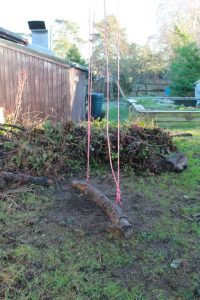
Impact of Covid-19
As Leask and Younie (2022) acknowledge, schools were told that they would be closing to all but our key worker and vulnerable children (approx. 40% of our school population) at very short notice, having only a weekend to prepare for online learning which was alien to me and many of my primary colleagues.
One of the unexpected consequences of this was that, while we got to grips with our remote education offer, we had a heady couple of weeks when the National Curriculum was suspended, and we were urged to get our remaining pupils outside as much as possible, allowing us freedom over what and how we taught.
Staff were surprised at how little our children knew about the natural world, that they couldn’t name some common wildflowers and had never spent time closely observing and drawing the animals that they had discovered (activities that those of us on the other side of 40 are likely to remember from our own school days). We were also surprised to see how engaged the children were with these activities and the discussion, questioning and relationships that arose. Unsurprisingly, they appeared to be thriving in smaller classes within less formal environments.
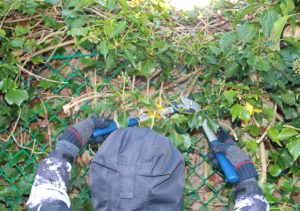
First forays into Forest School
In common with other schools, our first weekly Forest School sessions were with a group of eight Year 5/6 pupils – five of whom had diagnoses of ADHD and/or ASD and a further three pupils who were disaffected by school, having complex and chaotic home environments, seeing it as a “nurturing opportunity for certain children” (Cudworth, 2021, p.512). These were children who struggled to communicate, often reaching crisis point and becoming dysregulated or even violent towards staff. To start with, some staff did express concerns about letting them loose as a group with penknives and loppers!
However, after a couple of weeks, the change was profound.
Like findings discussed in Blackham et al. (2021) and Slade et al. (2013), friendships, or at the very least a newfound respect for each other, began to develop between the group. They were more enthusiastic about coming to school, started initiating conversations with staff, could talk about their achievements, grew in confidence, and developed much greater degrees of self-regulation. There was a physical change too. The pupils looked more like children again, as if the weight of struggling to conform was no longer such a burden. And this positive change continued, even when lockdown was over, and we returned to more formal learning.
Forest School principles
When our whole school returned from lockdown, it became apparent that academically our children had fared reasonably well. However, they had experienced little opportunity to play with their peers or develop their social skills and this led to tension at break and lunch times, as well as a marked increase in anxiety and mental health concerns within our school population. At this point, we made the decision to use Forest School as a basis for our recovery curriculum, using the six principles as set out by the Forest School Association (2018) to organise our provision, as seen below:
1. Forest School is a long-term process of regular sessions, rather than one-off or infrequent visits.
2. Forest School takes place in a woodland or natural environment to support the development of a lifelong relationship between the learner and the natural world.
3. Forest School uses a range of learner-centred processes to create a community for being, development and learning.
4. Forest School aims to promote the holistic development of all involved, fostering resilient, confident, independent and creative learners.
5. Forest School offers learners the opportunity to take supported risks appropriate to the environment and to themselves.
6. Forest School is run by qualified Forest School practitioners, who continuously maintain and develop their professional practice.
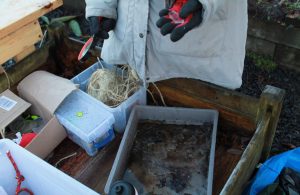
Recruiting teacher-Forest School leads
It took us a while to recruit our teacher-Forest School leaders.
We had several staff meetings with both our independent Forest School provider and our local university link, who clearly articulated what the role entailed, the rigour of the training and the difficulties that could be faced in ensuring that children are given genuine freedom in the sessions. The staff who signed up have embraced this.
As a wider staff, we have been given the opportunity to take part in after-school taster sessions and support our Forest School leads in pupil sessions.
Forest School Environment
We are a leafy, county primary school and, as such, very lucky to have extensive grounds surrounded by trees. We started out by using a large space towards the bottom of our field. However, we soon realised that it was too neat and too big an area to be properly embraced by our pupils. In the end, we found a small, forgotten patch of ground, overgrown with plants, that the children took charge of and began to develop into our Forest School area.
Taking ownership for its development allowed them to create a relationship with the space, claiming it as their own.
Budget & Timetabling
Whincup et al. (2021, p.9) acknowledge that there are issues relating to both budget and time constraints when it comes to Forest School provision. Like the participants in their research, we have relied on small grants, the generosity of former pupils, volunteers and PTFA funding. We have also made it a focus of our development plan, allowing us to budget for it more formally.
We also found that having a regular, timetabled session for Forest School prevents it being cancelled if other things come up, giving it a higher status within our school. Following training of an additional two teacher-Forest School leaders, Years 3, 5 & 6 now have weekly sessions, half a class at a time, over two half-terms a year.
These two separate blocks are important in allowing the children to closely observe the world around them. They are able to notice and classify the changing seasons, “developing a meaningful relationship with their environment” (Cudworth, 2021, p. 514) which is widely acknowledged to have a positive impact on mental health (Knight, 2016).
This nature connectedness encourages our pupils to care for the world, resulting in empathy for the animals and surroundings that they encounter on a regular basis, but we have also found that it has made our pupils more engaged with environmental issues on a wider scale.
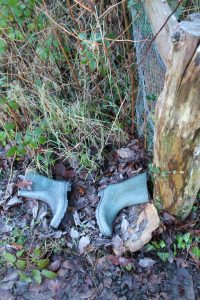
Forest School Communities
The idea that Forest School creates “micro-communities which [impact] on the social and emotional development of participants” (Blackham et al., 2021, p.5) was one that we wanted to explore further.
In addition to our class groupings, we also run extra sessions for pupils with additional needs, specific groups for pupils aimed at building confidence as well as sessions to help support with any friendship worries.
Like Blackham et al. (ibid, p.7) we also found that, “while a variety of Forest Schools can be held in the same environment, the meaning of each Forest School is constructed by the different groups and individuals inhabiting the space” and sessions that might sound very similar in their planning, often end up with very different outcomes.
Facilitating Learning
We wanted to stay true to the Forest School ethos with the leader’s role being to facilitate learning, “supporting pupils in acquiring the skills initially, stretching their learning before leaving the child to continue on their own.” (ibid, p.3), with links to Vygotsky’s concept of the ‘Zone of Proximal Development’, but also to ideas around Carol Dewck’s Growth Mindset with a suggested model of comfort zone, learning zone and panic zone (the children visualise this model as a fried egg and are encouraged to challenge themselves to get to the crispy bit around the edge!).
We offer activities, modelling the skills required to plant a tree, whittle wood or build a shelter. However, the children have the freedom to engage with these or strike off on their own. Children found this element of choice very difficult at first but now they tell us that this is one of their favourite things about Forest School.
Whincup (2021) talks about the difficulties that some teacher-Forest School leaders have had with Senior Leaders requesting that links are made to the National Curriculum. We have been very careful not to make any links within our sessions, unless the children want to explore a particular idea that they have been learning about in class – we encourage lots of outdoor curriculum-based learning, but this is in addition to Forest Schools. Instead, we aim to encourage the children to play and take supported risks in order to develop skills for learning: resilience, independence, determination, creativity and problem-solving.
Next steps
We are looking to have another teacher-Forest School leader trained this year so that we can offer sessions to all our year groups. We will also be working with our feeder infant school to develop their provision, as well as looking at the use of play more widely.
As one of the participants in Cudworth’s (2021, p.513) study states, “schools that have forest school are a lot more flexible with what they do; they understand that not every child learns in the same way and they are a lot more relaxed; everyone seems a lot happier.”
Some questions to ponder:
• What would be your rationale for setting up Forest School provision? Which pupils would you work with?
• How would you ensure your Senior Leadership Team and other colleagues were fully supportive?
• Are there unused spaces within the school grounds (or local facilities with appropriate permissions) that could be used for Forest School sessions?
• How would you overcome initial budget and timetabling concerns?
References
Blackham, L., Cocks, A. and Taylor Bunce, L. (2021) ‘Our Forest School isn’t just the trees.’ Forest Schools: micro-communities for social and emotional development. Journal of Adventure Education and Outdoor Learning 1(1): pp. 1-12
Cudworth, D. (2015) Schooling, space and social justice. Power & Education 7(1): pp.73-89.
Cudworth, D. (2021) Promoting an emotional connection to nature and other animals via forest school: disrupting the spaces of neoliberal performativity. International Journal of Sociology and Social Policy 41(3/4): pp.506-521.
Knight, S. (2016) Forest School in Practice. London: Sage.
Leask, M. and Younie, S. (2022) Education for all in times of crisis: lessons from Covid-19. London: Routledge.
Slade, M., Lowery, C. and Bland, K. (2013) Evaluating the impact of Forest Schools: a collaboration between a university and a primary school. Support for Learning 28(2): pp.66-72.
Whincup, V. A., Allin, L. J. and Greer, J. M. H. (2021) Challenges and pedagogical conflicts for teacher-Forest School leaders implementing Forest School within the UK primary curriculum. Education 3-13 49(3): pp.1-12.
We also recommend the Forest School Podcast!
No comments yet, fill out a comment to be the first

Leave a Reply